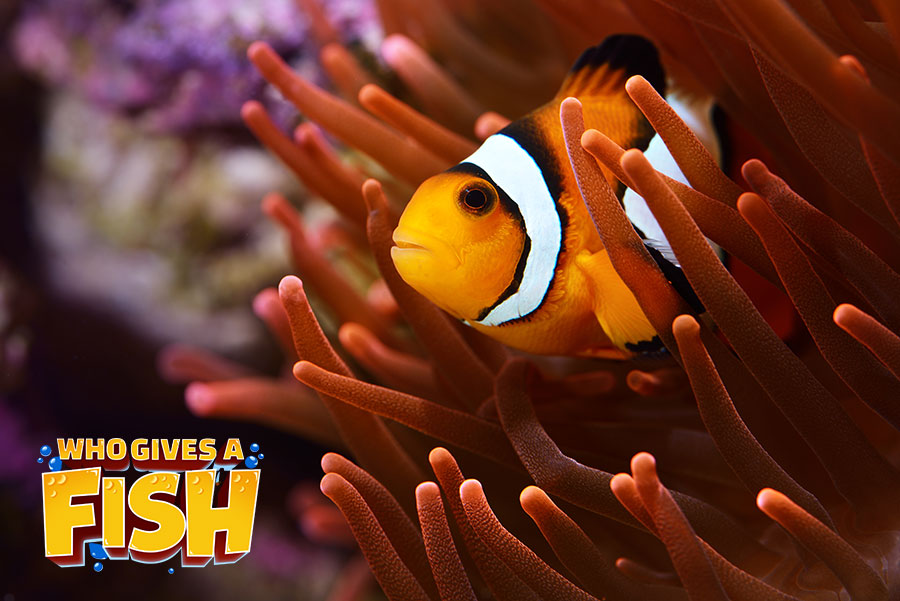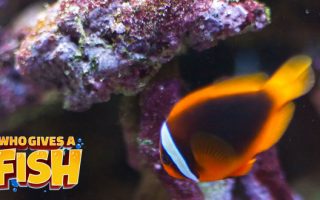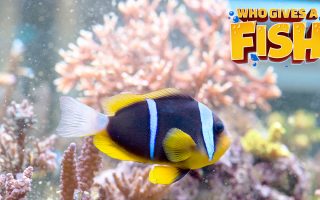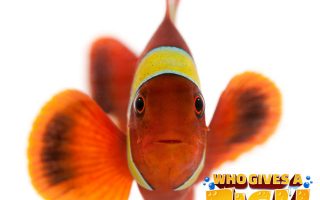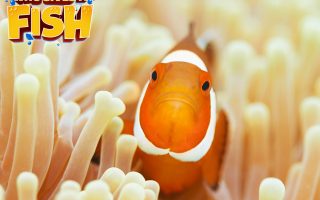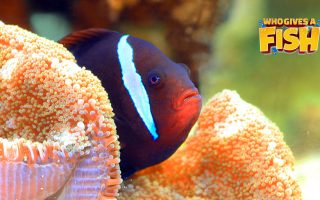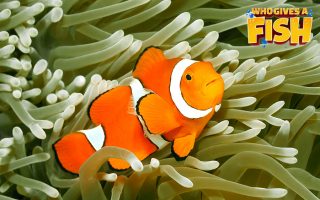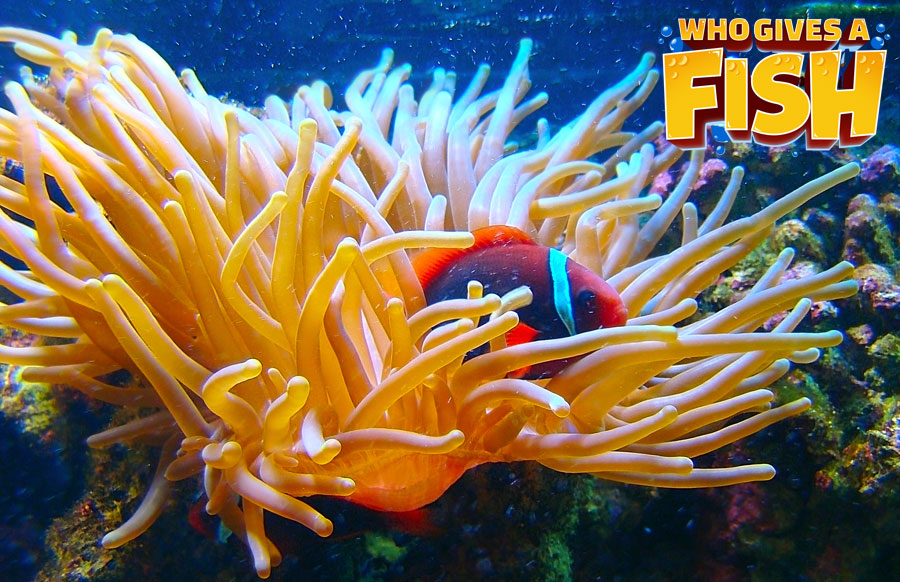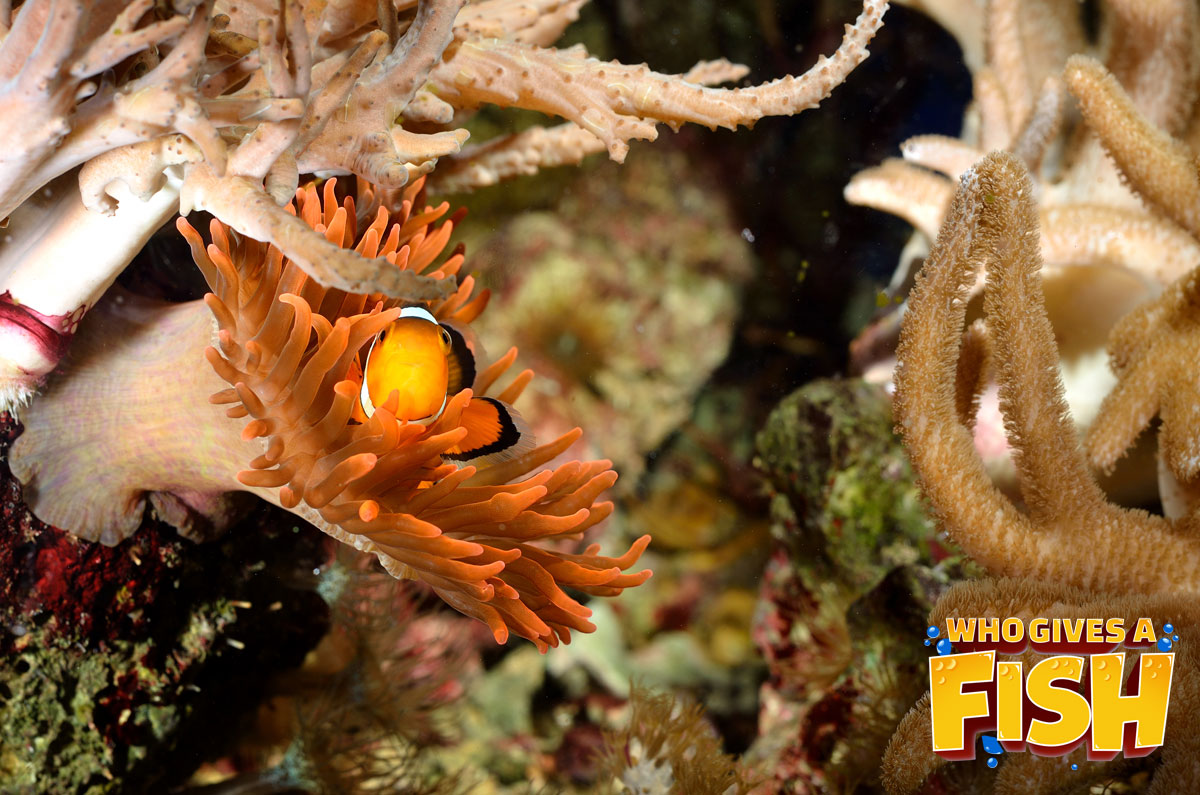Clownfish
Clownfish are a few of the most famous fish in the saltwater aquarium pastime. They are extremely gorgeous, promptly catching the eye, and amusing to watch. Even prior to Nemo becoming an everyday name, they were very popular. Numerous marine devotees enter the hobby merely because of the appeal of these colorful beauties.
To scientists, these fish are generally referred to as Anemonefish, although in the aquarium hobby they are more widely named Clownfish. Their comical swimming style and colorful appearance really is clown-like. But faithful to their Anemonefish name, you will usually see them snuggled in an anemone.
Most other fish will shun anemones because of their stinging tentacles whereas Clownfish can have a resistance to these stings.
In the wild, they in fact dwell in a symbiotic alliance with particular anemones, and gain from each other’s company for security and food.
Luckily, it is not a requirement to have an anemone in order to house a Clownfish in captivity. They will freely adjust without one and will often find an alternate host in a rock structure or coral, or another invertebrate.
If you do choose to house an anemone, pick one that your Clownfish is known to be familiar with. You will also need to ensure that the anemone’s specific requirements are met.
Clownfish, along with the Damselfish, are part of the Pomacentridae lineage. The bulk of the fish in this family are the Damsels which are usually fairly rugged aquarium residents. Sadly, many are known to become territorial (hostile) when they mature, with only a few exclusions, such as the Skunk Clownfish, the Green Chromis, and the Blue Reef Chromis.
The Pomacentridae family is additionally separated into subfamilies, and this is where the Damsels and Clowns are divided. Clownfish are positioned in the subfamily Anemonefishes or Amphiprioninae. It comprises of 30 known breeds, with one specimen put in the genus Premnas, and all others put in the genus Amphiprion.
These fish range from around 2.5″ (6 cm) in length for the littlest, such as the Percula Clown,all the way up to about 6.3″ (16 cm) for the bigger Maroon Clownfish. Dependant on the species, they can survive five years or more with the correct care.
Clownfish and Sea Anemones
In nature, Clownfish dwell in symbiosis with particular anemones, where each member offers an advantage to the other. The clowns aid their host by eagerly chasing away any intruders, feeding it and even cleaning it. In return, the host anemone will guard the Clownfish with its stinging feelers; feelers that only Clownfish are resistant to. In nature, a few clowns will dwell with the same anemone, however only one will be controlling. The controlling fish will be a female and all of the others will be males.
In the aquarium setting, you are able to supply an anemone for your Clownfish. They will easily adjust, and may even use other invertebrate or a coral or a rock structure as a surrogate if there is no anemone around. If you do select to include an anemone, it will require plenty of light. A scheme that gives 2 to 5 watts per gallon, and preferably provided some higher temperature metal halide lighting or blue spectrum by actinic light bulbs is ideal. There are particular anemones that each sort of Clownfish is established with in nature, and the certain host anemones are recorded with each clownfish in its guide. But, a few clowns will happily accept other sorts of Anemones in the aquarium.
Beginner Clownfish Species
A few Clownfish are extremely rugged and make excellent fish for an amateur aquarist. There are, however, a few that are rather delicate, and a few breeds that require keeping singly. Unless you have an extremely big tank, it’s a good idea to house only one Clownfish, or one mated couple per tank, as they can be hostile towards other Clownfish breeds. These fish differ not only in their level of care, but also their personalities.
Clownfish breeds that are most fitting for amateurs are easy to acquire and rugged. These include the mild-mannered Ocellaris Clownfish and the placid Skunk Clownfish. The Cinnamon and Tomato Clowns, together with the Clark’s Anemonefish, are also extremely rugged and easily available, but they are fairly more territorial. The Maroons are very hostile and have no patience for other clowns, not even their own sort, but they too are rugged and easily available.
Species that are less than ideal for amateurs contain the Percula Clownfish. Though these are the littlest species of Clownfish, however they are most costly, and need more consideration to water quality than the more rugged variations. There are some other variations that acclimatize slowly to the aquarium and are easily stressed, so are not recommended for an amateur aquarist. These include the Wide-Band Anemonefish, Sebae Clownfish and the Saddleback Anemonefish.
Habitat
These fish are usually very rugged and will thrive in a few saltwater aquariums. A tank of at least 20-gallons in water volume is recommended for the small to medium breeds, the bigger species will thrive with a minimum of 30 gallons. Be sure to include décor and rock structures for hiding along with a lot of open areas for swimming.
Clownfish in an aquarium have no specific lighting needs, but if housed in a reef habitat, many of the other inhabitants will require an extremely bright light. You can supply a host anemone, but you must possess a healthy system in order to keep up with the nutritional needs of this animal.
Reef aquariums need plenty of live sand and live rock. Helpful bacteria will occupy the rock and sand in order to help keep the water pure. This sort of tank requires the addition of some specific equipment to supply ideal water motion and bright lighting. Reef tanks also need good filtration and a protein skimmer is helpful also. Frequent water changes are crucial, as they replace critical trace elements that the corals and fish deplete, such as iodine, calcium, strontium and magnesium.
Feeding
Clownfish are selfish eaters. In captivity, they will feed on almost everything that it is presented to them. They will happily consume all sorts of vegetable and meaty foods. Ideally you should supply them with a decent variety of frozen, live, and flake foods. These can comprise of such foods as brine shrimp and mysis, spirulina flakes, krill, bloodworms and delicately chopped meaty foods.
Be sure to feed your Clownfish at least once a day. A guideline when feeding once a day, is to supply them what they consume in around five minutes. It is fine to feed the fish more than once a day, with up to three feedings, but only feed them what they will eat in around three minutes. If you feed them big pieces of meaty food, you can watch the Clownfish grab the chunks, and then place them into the anemone.


